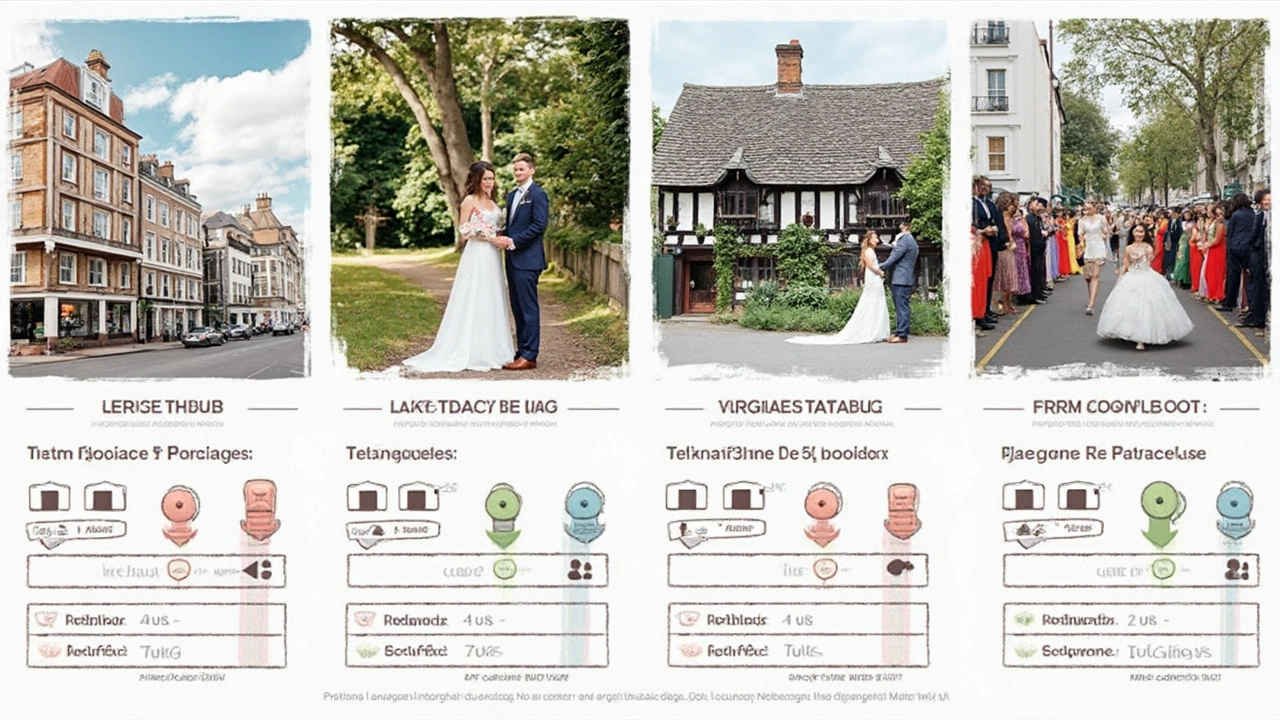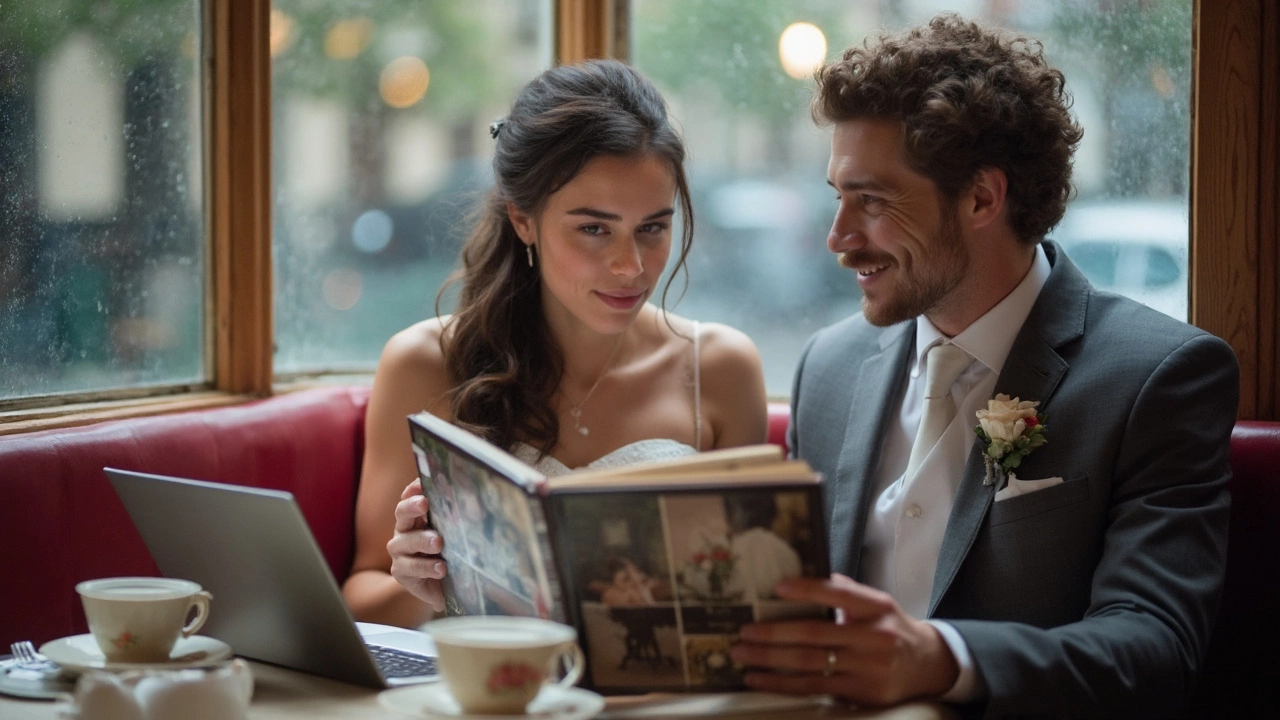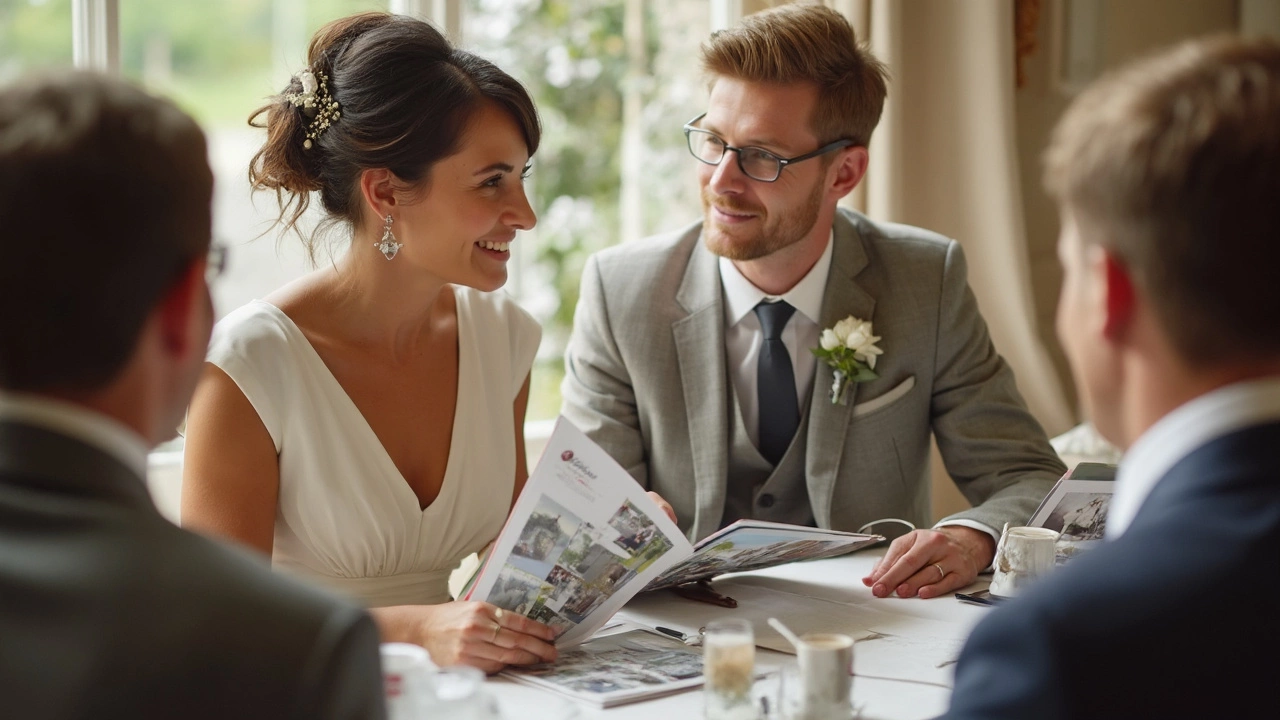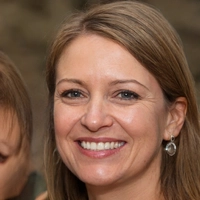Sticker shock hits fast when you see wedding photographer prices for the first time. Honestly, people don’t realize how big of a line item this can be until they start getting quotes—one friend of mine thought it’d be a couple hundred bucks, and she practically spat out her coffee when she first heard the real numbers.
The average amount couples in the U.S. spend on a wedding photographer in 2025 is sitting right around $2,900. Some folks spend as little as $1,500 for a new photographer, while others drop closer to $7,000 and even more if they want someone really in demand or based in a pricey city. What you pay often depends on things like the photographer’s experience, how much of your day you want covered, the area you live in, and what’s included in the package.
If you’re on a tight budget, you’re not alone, and there are ways to save without sacrificing great photos. But don’t just grab the cheapest option—you really do get what you pay for when it comes to wedding photography. The question to ask yourself: is this the one part of the day you want to cut corners on? Nobody remembers the napkins, but those photos hang on your wall for the next fifty years.
- How Much Couples Really Spend
- Why the Price Range is So Wild
- What’s Usually Included in the Price
- Tips for Getting the Best Value
- Extra Fees and Common Surprises
How Much Couples Really Spend
So what do couples actually shell out for wedding photographer services? Here’s the reality: it’s not pocket change. In the U.S. right now, the ballpark average is $2,900, but there’s a full range out there depending on your choices.
Some newlyweds pull off decent deals for as low as $1,200 if they go with someone just building their portfolio. Most end up spending between $2,000 and $4,000 for an experienced photographer covering most or all of the day. If you’re getting married in a big city like New York or San Francisco, it’s not unusual for price tags to start at $4,000 and climb past $7,000—especially if you’re eyeing someone with tons of five-star reviews.
| Type of Photographer | Typical Price Range (2025) |
|---|---|
| Entry-level/New | $1,200 - $2,000 |
| Mid-range/Experienced | $2,000 - $4,500 |
| Top-tier/Premium | $4,500 - $8,000+ |
Geography is a big deal too. Just to show you how the numbers swing city by city: couples in Chicago usually spend about $3,200, while in the Midwest or smaller towns, $2,000 might get you a similar package. Rural areas often offer better deals, but you might get fewer choices for styles or packages.
Here’s something wild—a survey from The Knot in 2024 showed that 85% of couples said photography was their top non-negotiable vendor. Most are willing to stretch the budget a bit if they find a photographer they love.
- Most photographers require a deposit ranging from 25-50% of the total fee to reserve the date.
- Extras like second shooters or engagement sessions can bump up the final bill by $300-$1,000.
- Albums or prints are sometimes not included and add a few hundred more.
Bottom line: knowing these ballpark numbers helps you plan your wedding budget without ugly surprises. Have an honest talk about your priorities and don’t forget to factor in the extras you care about. The prices can be a shock at first, but plenty of couples find it’s worth the peace of mind on their wedding day.
Why the Price Range is So Wild
The price gap for wedding photographers is pretty wild, no kidding. For starters, location plays a massive role. A wedding photographer in New York City or San Francisco can cost double or even triple what you’d pay in a smaller town. Demand is higher in big cities, and the cost of living drives up prices—pretty straightforward.
Experience also matters. Newer photographers building their portfolios usually charge less because they’re trying to get referrals and reviews. On the flip side, someone with 10+ years behind the lens, killer reviews, and a unique style can set their rates much higher, and people still line up to book them.
Then there’s what’s actually included. Some photographers only shoot for a couple hours and hand over digital files, while others are there all day, give you edited photos, a custom album, and maybe a second shooter for backup. Extras like engagement shoots, travel, and drone footage add up too.
"Clients are often surprised by how much work happens before and after the wedding day—editing alone can take thirty hours or more per event," says Katelyn James, a well-known wedding photographer. "It's not just showing up with a camera."
Check out how costs can break down depending on a few key variables:
| Factor | Typical Price Range |
|---|---|
| Entry-Level Photographer | $1,000–$1,800 |
| Experienced Professional | $2,900–$4,500 |
| Big City or High Demand Area | $4,500–$7,000+ |
| Day Coverage (8+ hrs) | Add $700–$1,500 |
| Extra Add-Ons (Albums, Second Shooter, Video) | $300–$1,200 |
So, why the wide swings? You’re not just paying for someone to snap photos. You’re covering their experience, gear, editing time, location, insurance, and everything they put in to make sure you actually want to show people your wedding album. When budgeting for a wedding photographer, keep all these moving pieces in mind.

What’s Usually Included in the Price
When you’re working out your wedding photographer budget, it helps to know what you’re actually paying for. Most photographers price their services as a package, but what’s inside that package can vary a lot based on who you pick and where you live.
Here’s what you can usually expect if you’re paying a typical rate in 2025:
- Coverage hours. Most basic packages include anywhere from 6 to 8 hours of coverage—enough to get you from getting ready through the first half of the reception. Some couples add extra time for full-day coverage, which may increase the price by about $200–$400 per extra hour.
- Number of photographers. Some packages come with two shooters—one handling the big moments, while the second captures candid shots or details. Larger weddings or all-day events almost always benefit from having both.
- Edited digital photos. Nearly every photographer will deliver a curated gallery of edited digital images, usually 300–800 photos depending on hours covered and size of the event. These files are typically high-res and ready to print or share online.
- An online photo gallery. Most will set you up with a private online gallery so you, your friends, and your family can easily view and download photos.
- Print rights or usage rights. Standard packages almost always let you print your photos anywhere you want, but some high-end photographers still limit printing to their approved labs for quality control (always ask up front).
- Consultation and timeline planning. Many include a consultation, either in person or on Zoom, where you’ll go over your timeline, must-have shots, and preferences. It’s a simple way to make sure everyone’s on the same page.
Some packages throw in extras like engagement sessions, printed albums, or sneak-peek photos within 24 hours. These perks can sweeten the deal, just make sure you actually want them instead of getting wowed by a big-sounding bundle. Don’t be shy—ask for a breakdown, and always read the fine print so you know if things like travel fees, extra edits, or raw files cost extra.
Tips for Getting the Best Value
Getting more for your money with your wedding photographer isn’t about slick negotiating—it’s about being smart with your choices, asking the right questions, and knowing what matters most to you. Here’s how couples can avoid overpaying and still end up with photos they love:
- Prioritize coverage hours: Do you really need 11 hours of coverage or will 6 get the big moments? The cost often jumps each extra hour, so trimming coverage can save hundreds.
- Book early: Photographers fill up fast, especially the good ones. Booking 12-18 months ahead locks in this year’s rates before they go up again. Some even give early bird deals if you ask.
- Edit your must-haves: Skip extras you don’t care about (like fancy albums or engagement sessions). Focus spending on what you’ll enjoy for decades.
- Look at newer talent: Experienced photographers charge more, but newer pros often deliver solid work for less. Just make sure you see a full gallery and read real reviews.
- Consider day-of timing: Fridays and Sundays, or off-season months, mean lower demand and better prices. Many photographers offer weekday or winter discounts, sometimes up to 20% off.
Here’s a quick comparison of ways to save, alongside how much they cut from your bill on average:
| Money-Saving Move | Estimated Savings |
|---|---|
| Cutting 2 hours of coverage | $300 - $600 |
| Skipping printed album | $400 - $1,000 |
| Booking off-season/winter | 10% - 25% from package price |
| Working with a newer photographer | $500 - $2,000 |
One more pro tip: Always get everything in writing, from the number of edited photos you’ll receive to the backup plan if your photographer gets sick. If you’re clear and upfront about your budget and expectations, most photographers will work with you to shape a package that makes sense—and sometimes throw in little extras, like an extra flash drive or a few prints for your parents.

Extra Fees and Common Surprises
Buckle up—when budgeting for a wedding photographer, the number you first see isn’t always the number you’ll actually pay when all is said and done. So many couples get blindsided by extra charges that come up after they’ve already signed a contract. The best way to avoid these headaches is to know what sneaks onto that final bill most often.
- Travel fees: If your wedding isn’t close to the photographer’s home base, most will tack on mileage or travel fees. Some charge per mile, while others ask for accommodation. Even local photographers may charge if your venue is outside their standard area—everyone’s trying to cover gas right now, after all.
- Second shooter/additional assistant: Some starter packages only include one person with a camera. Want another photographer to catch different angles or help during big group shots? That’s extra. A second shooter can cost anywhere from $300 to $800 more for the day.
- Extra hours: Most packages include a set number of hours (usually 6–8). Need your photographer to stick around for late dancing or an afterparty? Overtime isn’t cheap and often runs $200–$500 per extra hour, depending on their standard rate.
- Editing and retouching: Basic edits are included, but advanced requests—like heavy airbrushing or fixing photos in Photoshop—can cost extra. Always ask what’s included and what counts as a "premium" edit.
- High-resolution files and albums: One of the biggest shocks for couples comes when they realize the basic package is just online proofs. Actual print rights, high-res digital downloads, or physical albums cost hundreds more. Custom albums can start at $400 and go up fast depending on size and materials.
- Rush delivery: Need your pictures back fast? While usual turnaround is 6–10 weeks, next-week delivery is almost always an extra fee.
Take a look at how these can add up:
| Extra Fee | Typical Cost Range |
|---|---|
| Travel or mileage | $0–$500+ |
| Second shooter | $300–$800 |
| Extra hourly coverage | $200–$500/hr |
| Custom album | $400–$2,000 |
| High-res downloads/print rights | $100–$600 |
| Rush delivery | $250–$1,000 |
The most important thing is to get everything in writing. If you see "starting at" language anywhere on the package, ask for a detailed breakdown. Don’t assume anything—photographers are usually happy to walk you through what’s included and what’s not. That way, you don’t have to worry about surprise charges popping up just when you’re relaxing after the big day.
People searching for the wedding photographer cost should always set aside a little buffer in their budget. You’ll thank yourself for being cautious if you do decide a custom album or extra coverage would be worth it later on.

